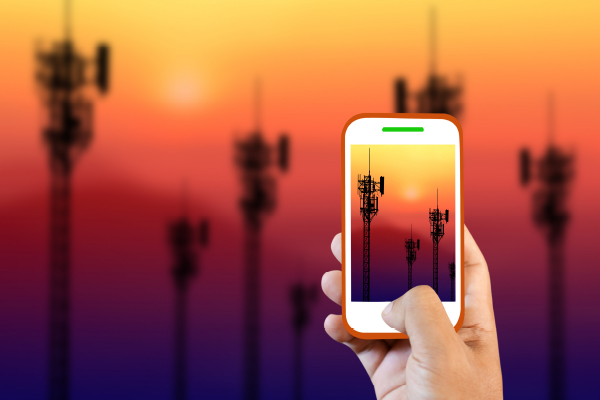With the TRA desperate to get more spectrum by 2020 for the 5G network to power the ‘Smart Future’ of Dubai, how can telecoms providers hope to deal with this surge in demand for mobile data, and what technologies are available to help combat network congestion?
Many telecom operators globally are looking for high efficiency bandwidth due to the continued upsurge in mobile data. In the Middle East particularly, telecoms providers relentlessly compete for wireless spectrum capacity in an era of heavily congested and over-subscribed demand for mobile data. As a result of this, spectrum availability in the region is limited. This rising traffic is being driven by the increasing number of mobile subscribers, particularly smartphone users, who are connecting to faster networks and consuming bandwidth-heavy content. At the rate mobile subscribers are consuming data, new technologies alone cannot keep up.
In order to increase the amount of spectrum available to operators, providers need to think of new and innovative ways to improve availability and efficiency levels if they are to cope with this high demand. Operators need to begin lobbying for licenses and utilising unlicensed spectrum through LTE-U, says Christian Bartosch, associate director at The Boston Consulting Group Middle East. However, not all spectrum is equal, and therefore isn’t always appropriate for mobile coverage. “Higher frequency bands do not lend themselves well to coverage, and some bands show heavy interference from parallel or adjacent usage,” Bartosch says. “Spectrum in excess of 2.3GHz is more suitable for small cell applications, especially for indoor capacity.”
But even when the issue of spectrum availability is solved, additional challenges are still present in terms of optimising spectrum efficiency in a mobile network. Spectral efficiency determines the amount of data that can be transported over a spectrum per second as a result of many factors, but the most important is signal quality. Bartosch claims that it is possible to significantly improve spectral efficiency through improving the signal quality in the network through better radio planning – as the maximum technical spectral efficiency of a radio site is determined by the radio access technology deployed. “Based on Big Data analytics – which leverage information about individual customer behaviour and consumption, beamforming antennas and improved interference management – it is possible to improve the experienced spectral efficiency by up to 100 percent,” he claims.
Whilst competing for spectrum availability in this way is one option to improve network efficiency, operators should also be looking to continuously upgrade their networks via other methods. 5G is still a relatively distant prospect, and isn’t expected to be rolled out until 2020. In the meantime, mobile network operators (MNOs) should look to invest in new technology such as HSDPA (high-speed downlink package access.) In simple terms, this is an enhanced 3G connection – otherwise known as 3G+ or 3G.5 – which allows for higher data speeds and capacity levels. Adopting this technology combined with rolling out an increasing number of cellular base stations and public Wi-fi hotspots will help operators cope with this dramatic growth in mobile data services.
Yet none of these ‘on-network’ facilitators will be of any assistance in congested areas, where users are unable to access their data quickly due to the high-volume of network traffic. “Network congestion is a similar concept to traffic congestion in a busy city, when lines of traffic form as vehicles on the road and exceed its capacity,” says Moath Ismail, telecommunication solution director, Gemalto Middle East. “Likewise, network congestion occurs when the amount of data being sent across a network link exceeds the total bandwidth of that part of the network.”
Ismail believes there are two methods to try and ease this network congestion problem. One option is to manage access to the existing cellular network infrastructure. “MNOs can leverage technologies such as a data packet inspection (DPI), which allows them to control the allocated resources and assign different priorities of data access to different users,” he says. The second method is to offload subscribers onto complementary network technologies, such as Wi-Fi. “This option will reduce the data volume carried by the cellular network and therefore free up bandwidth for users,” says Ismail. “Wi-fi offloading could help operators to tap into new revenue streams while providing cheaper, more convenient data access with a better experience for users in congested areas.” Bartsoch agrees, and says, “Offloading mobile data traffic to Wi-fi and small cells is one of the key levers in handling the surge in mobile data traffic.”
Whilst Ismail believes that Wi-fi offloading could “partially address exhausted spectrum concerns,” he maintains – in agreement with Bartosch – that MNOs should still continue to innovate and invest in alternative technologies to strengthen network resources. “Moreover, operators need to start utilising new technologies using different radio bands, such as LORA, which is designed to allow long range communications at low speed,” he says.
Looking ahead, the race to 5G is on – and operators should already be putting preliminary plans in place in order to deal with the migration smoothly and successfully. 5G technology will “empower customers with even faster data connections, whilst opening up avenues for new applications and even help build widely-connected Smart Cities,” says Ismail. Beyond that, 5G is expected to unleash a huge Internet of Things phenomenon, where networks can serve the communication needs of billions of connected devices.
But in order to handle this evolution, existing networks need altering. “The deployment of a dense mesh of small cells in high traffic areas, coupled with fibre backhaul and the shift to cloud RAN will be key in the evolution,” says Bartosch. “This will allow operators to scale for the data growth whilst incurring less cost.” He adds, “We would also advise operators to start thinking of market repair regarding data tariffs, rather than seeing 5G as a way to give even more data away for less money.”
While networks evolve in the build up to 2020, cellular technology standards must grow simultaneously alongside them. “Previously, cellular technology standards were planned, designed and then use cases were adapted to fit within set standards,” Ismail says. “This is no longer the case, as standards are evolving and becoming more relevant to the possible 5G use cases.”
The full potential of 5G is still unknown, but operators can anticipate that its implementation will significantly impact existing networks as we know them. “A densification of the macro site grid will no longer yield the required capacity increments due to interference and carrier pollutions,” says Bartosch. “But we anticipate that 5G networks will adopt a more open connectivity layer between the mobile terminals and core network, resulting in significantly improved traffic management capabilities.”






